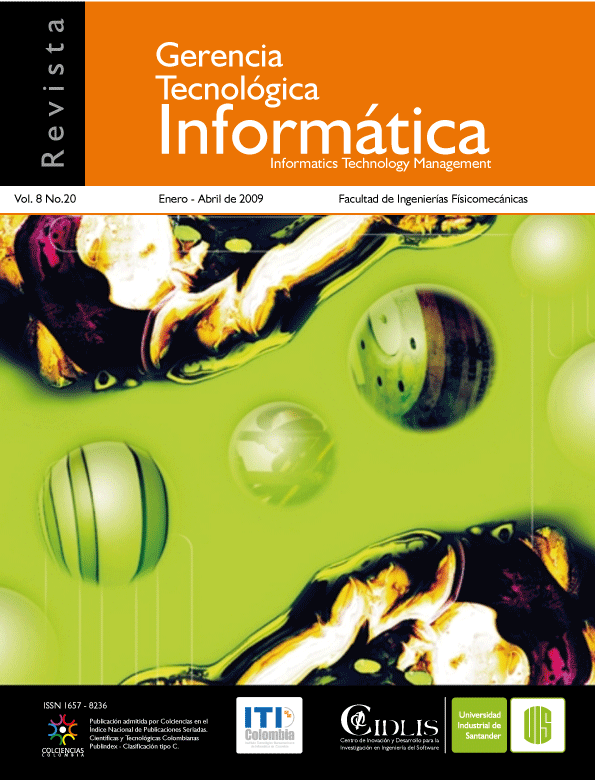EL FLUJO DE DISPERSIÓN MAGNÉTICO COMO HERRAMIENTA DE ANÁLISIS PARA DETECCIÓN DE FALLAS EN MOTORES DE INDUCCIÓN MEDIANTE TÉCNICAS DE ANÁLISIS ESPECTRAL
Cómo citar
Resumen
RESUMEN
El objetivo de este trabajo es mostrar los resultados de la caracterización espectral del flujo de dispersión magnético presente en los motores de inducción bajo diferentes condiciones de operación, para ello se han utilizado un sensor de campo magnético y las técnicas de tratamiento digital de señales. Los resultados obtenidos muestran una clara relación entre el contenido espectral del flujo de dispersión y las diferentes condiciones de operación evaluadas, lo que permite intuir la posibilidad de utilizar esta técnica como herramienta de detección de fallas en los motores de inducción.
PALABRAS CLAVES: Falla, Flujo de dispersión, Armónicos, Espectro.
ABSTRACT
The purpose of this work is to show the result of spectral characterization of flow magnetic dispersion in the motors of induction below different conditions of operation, for it they have utilized a sensor of magnetic field and the techniques of digital treatment of signals, result obtained evidence an obvious relations between the spectral contents of flow of dispersion and the differ conditions of operation evaluated, it that permits intuiting the possibility to utilize this technique like tool of detection of faults in the induction motors.
KEYWORDS: Fault, Flow of dispersion, Spectrum, Armonic.
Descargas
Referencias
- BENBOUZID. M.E.H, Viera. M- Theys. Inductionmotors faults detection and localization using stator current advanced signal processing tecniques.Power Electronics. IEEE Transactions on Volume ).P 14-22.1999
- Bonnett. A. H, Soukup, G.C. Analysis of rotor failures in squirrel cage induction motors. IEEETransactions on Industry Applications. Vol. 24-6.P1124-1130. Nov-Dic 1988
- Gleichman, R. C. Failure Modes and Field Testingof Medium-Voltage Motor Windings, IEEE. Transactions on Industry Applications, 38(5), 1473-1476
- Hachemi B. M, A review of Induction Motor Signature Analysis as a Medium for Faults Detection.IEEE Transactions on Industry Electronics, Vol47-5 p 984-993. Oct 2000
- Jarzvna, W. “Diagnostic characteristics of axial fluxin an induction machine. Electrical Machines andDrive. 1995. Seventh International Conference onp 141-148. 1995
- Motor Reliability Working Group, “Repor of largemotor reliability. survey of industrial and comercialinstallations Part I, and II,” IEEE. Trans. Ind. Appl.,vol. 21-4, pp. 853-872, July-Aug. 1985
- Penman. J, H. G. Sedding, B. A. Lloyd, and W. T.Fink, “Detection and location of inter-turn shortcircuits in the stator windings of operating motors,” IEEE Trans. Energy Conversion, vol. 9, pp.652–658, Dec.1994
- Veruchhi. C. J, Acosta. G.G, “Técnicas de detección y diagnóstico de fallos en Máquinas eléctricasde inducción”. IEEE latin America Transaction Volumen 5 No 1. 2007. p 41-49.
